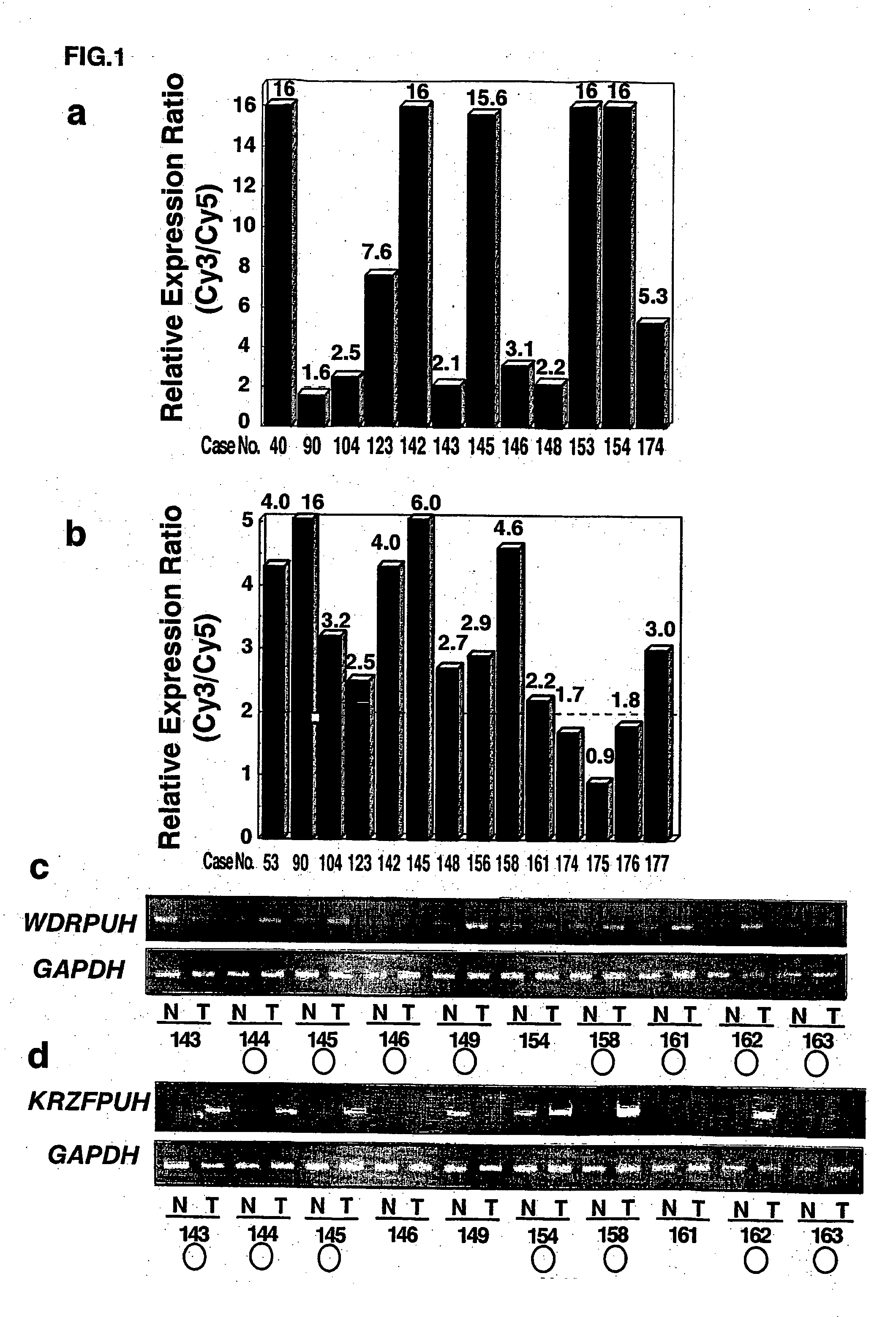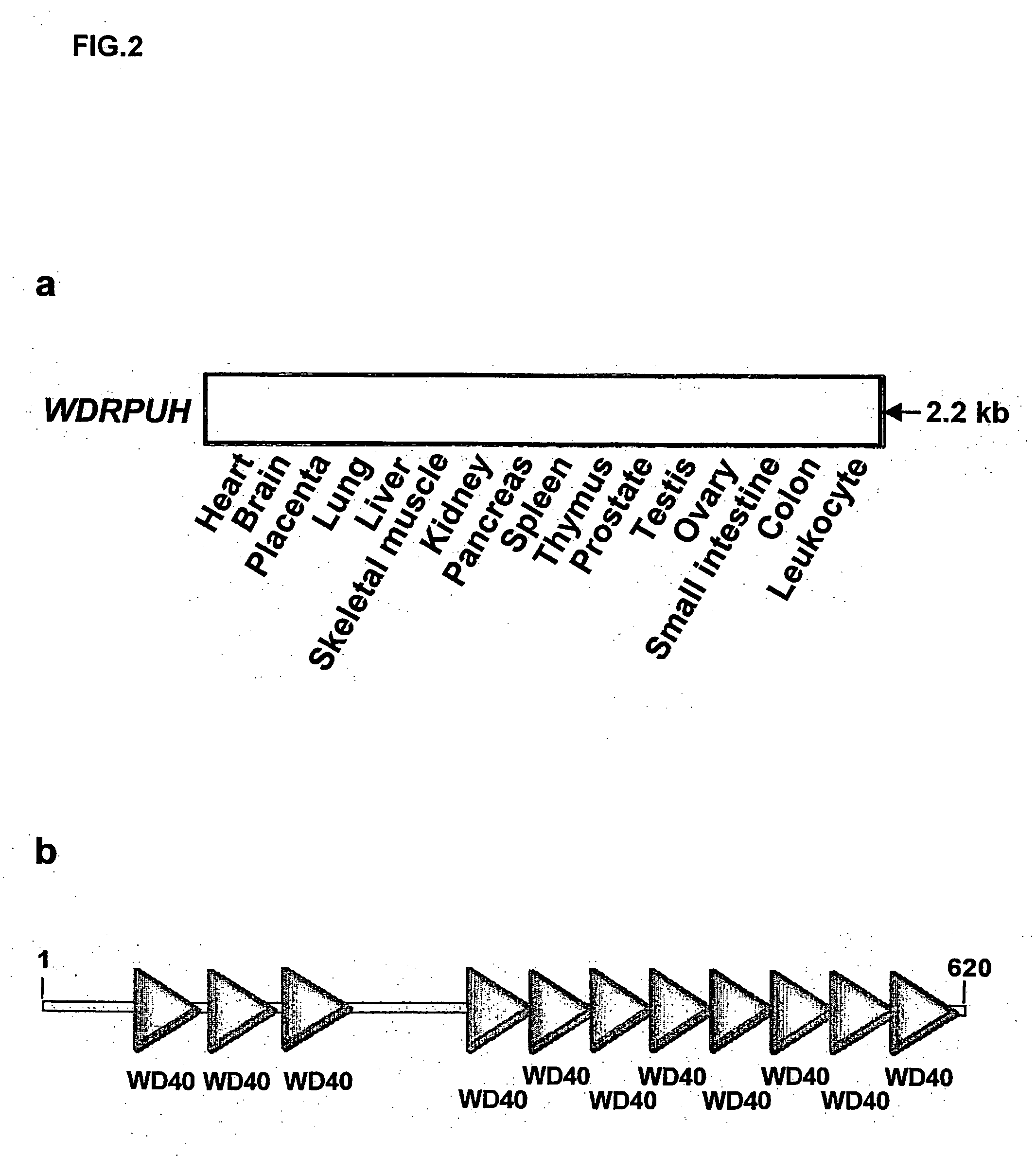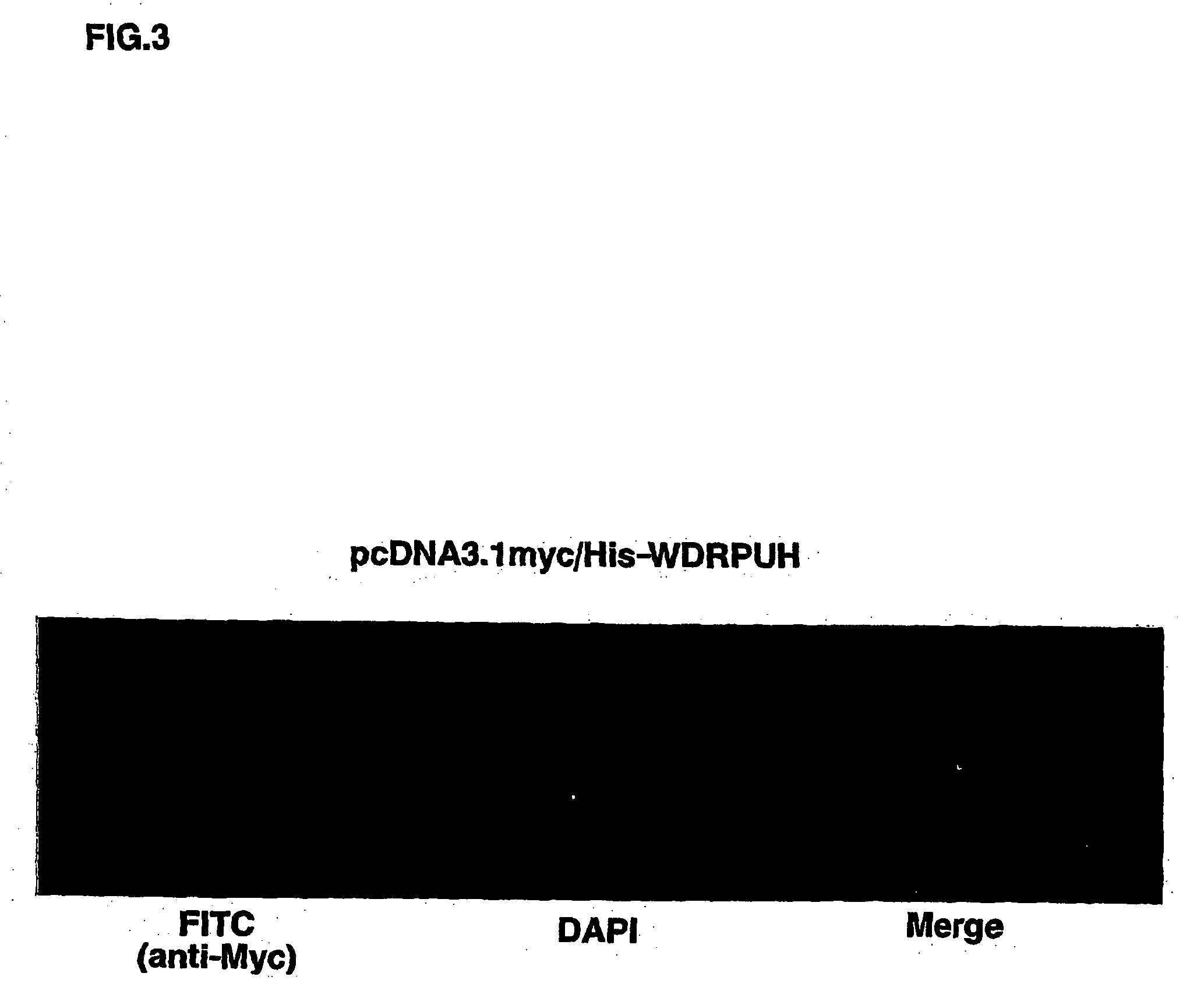Genes and polypeptides relating to hepatocellular or colorectal carcinoma
a technology of hepatocellular or colorectal carcinoma and gene, applied in the field of biological science, can solve the problems of toxic to cancer cells and normal growth cells, and achieve the effect of inhibiting the expression of reporter genes and inhibiting the growth of cancerous cells
- Summary
- Abstract
- Description
- Claims
- Application Information
AI Technical Summary
Problems solved by technology
Method used
Image
Examples
example 1
Identification of Two Novel Genes, WDRPUH and KRZFPUH, Frequently Up-Regulated in HCCs
[0252] The expression profile of 20 HCCs were compared with that of corresponding non-cancerous liver tissues using in-house genome-wide cDNA microarray containing 23040 genes. More specifically, HCC tissues, and corresponding non-cancerous tissues were obtained with informed consent from surgical specimens of patients who underwent surgery. Total RNA was extracted from microdissected tissue with Qiagen RNeasy kit (Qiagen) or Trizol reagent (Life Technologies) according to the manufacturers' protocol. The extracted total RNA was treated with DNase I, amplified with Ampliscribe T7 Transcription Kit (Epicentre Technologies) and labeled during reverse transcription using Cy-dye. (Amersham). Cy5 and Cy3 were used for labeling RNAs from non-cancerous tissue and tumor, respectively. Then, hybridization, washing, and detection were carried out according to the method of Ono et al. (Cancer Res 60: 5007-11...
example 2
Expression, Isolation, and Characterization of the Novel Human Gene WDRPUH
[0258] Next, multi-tissue northern blot analysis was performed using the PCR product of WDRPUH as a probe. More specifically, human multiple-tissue blots (Clontech) were hybridized with 32P-labeled PCR product of WDRPUH. Pre-hybridization, hybridization, and washing were performed according to the supplier's recommendations. The blots were autoradiographed with intensifying screens as −80° C. for 24 to 72 h. As a result, a 2-kb transcript was detected to be abundantly expressed in testis (FIG. 2a). Since D3197 was smaller than the WDRPUH cDNA detected on the Northern blot, next the inventors investigated the 5′ sequence of WDRPUH cDNA. First, the genomic sequence corresponding to D3197 was searched in genomic databases (http: / / www.ncbi.nlm.nih.gov / BLAST / ) using BLAST program to find a cosmid sequence (GenBank Accession No. AC026855) assigned to chromosomal band 17 p13. Candidate-exon sequences of the genomic ...
example 3
Subcellular Localization of WDRPUH
[0259] The entire coding region corresponding to WDRPUH was amplified using gene specific primer set: 5′-GGGGTACCACCATGGATAACAAAATTTCGCCGGAG-3′ [SEQ ID NO: 14] and 5′-CGGAATTCTCAGGAGGTATATGGGTACTTCCATGC-3′ [SEQ ID NO: 15]; and cloned into pcDNA3.1myc / His vector (Invitrogen). Then, the constructed vector pcDNA3.1myc / His-WDRPUH was transiently transfected into SNU475 cells (Korea cell-line bank) and the cells were grown in RPMI1640. The cells were fixed with PBS containing 4% paraformaldehyde for 15 min, then permeabilized with PBS containing 0.1% Triton X-100 for 2.5 min at room temperature (RT). Subsequently, cells were covered with 2% BSA in PBS for 24 h at 4° C. to block non-specific hybridization. 1:1000 diluted mouse anti-myc monoclonal antibody (Sigma) was used as the primary oantibody for immunocytochemical staining, and the reaction was visualized after incubation with Rhodamine-conjugated anti-mouse secondary antibody (Leinco and ICN). Nucl...
PUM
| Property | Measurement | Unit |
|---|---|---|
| temperature | aaaaa | aaaaa |
| temperature | aaaaa | aaaaa |
| weight | aaaaa | aaaaa |
Abstract
Description
Claims
Application Information
 Login to View More
Login to View More - R&D
- Intellectual Property
- Life Sciences
- Materials
- Tech Scout
- Unparalleled Data Quality
- Higher Quality Content
- 60% Fewer Hallucinations
Browse by: Latest US Patents, China's latest patents, Technical Efficacy Thesaurus, Application Domain, Technology Topic, Popular Technical Reports.
© 2025 PatSnap. All rights reserved.Legal|Privacy policy|Modern Slavery Act Transparency Statement|Sitemap|About US| Contact US: help@patsnap.com



